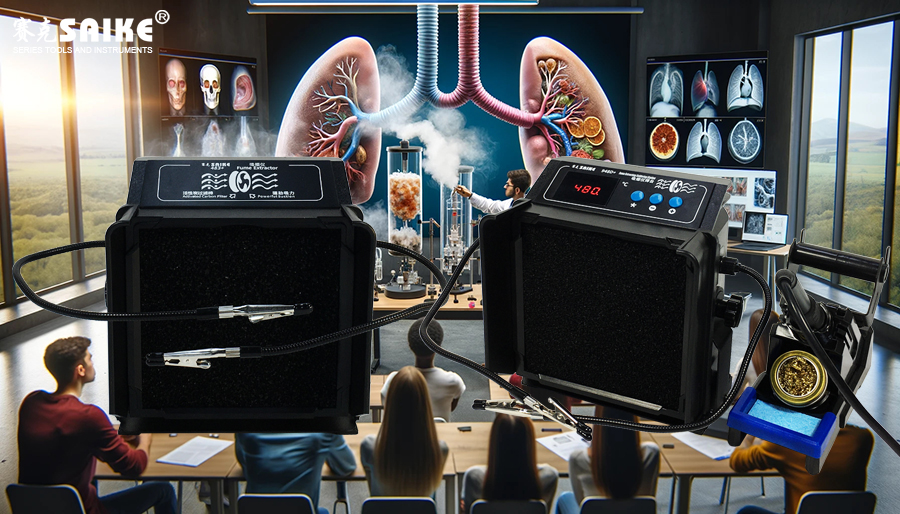
SK-YJ000XYY-KP 100019
Welding fumes contain various harmful substances that can have severe impacts on the health of operators and the environment. Fume extractors, as effective control devices, can significantly reduce these risks. This article will provide a detailed analysis of the health risks and environmental impacts of welding fumes and explore how fume extractors can mitigate these issues.
I. Health Risks of Welding Fumes
1.Respiratory Diseases
– Dust and metal particles in welding fumes can invade the lungs, and long-term exposure may lead to respiratory diseases such as welding fume fever, metal fume fever, and other respiratory problems.
2.Nervous System Damage
– Certain chemicals in welding fumes, such as manganese, can enter the body through the respiratory tract and cause damage to the central nervous system, triggering changes in behavior and cognitive function.
3.Skin and Eye Problems
– UV rays and chemicals in welding fumes can cause skin burns and other skin diseases, while also harming the eyes, such as arc eye.
4.Cancer Risk
– Substances in welding fumes, such as cadmium and chromium, are classified as potential carcinogens.
II. Environmental Impacts of Welding Fumes
1.Air Pollution
– Particulate matter and harmful gases released by welding fumes affect the air quality of the surrounding environment, increasing the burden of air pollution.
2.Greenhouse Gas Emissions
– Certain welding processes may directly or indirectly release greenhouse gases such as carbon dioxide and ozone, thus exacerbating global warming issues.
3.Waste Disposal
– Waste generated from materials and consumables used in the welding process needs to be properly disposed of, otherwise, it may contaminate soil and water sources.
III. Risk Reduction Role of Fume Extractors
1.Effective Filtering of Harmful Substances
– Fume extractors can capture and remove harmful particles and gases in the air through efficient filtering systems, such as HEPA filters and activated carbon layers, reducing health threats to operators.
2.Improving the Work Environment
– By reducing harmful substances in the air, fume extractors help improve the air quality of the workplace, creating a safer and healthier work environment.
3.Reducing Environmental Pollution
– By reducing harmful emissions, fume extractors help mitigate the impact on the surrounding environment to some extent, especially improving air quality.
IV. Conclusion
In summary, the negative impacts of welding fumes on health and the environment are significant, and the use of fume extractors provides an effective solution. By efficiently filtering harmful substances in the air, fume extractors not only protect the health of operators but also help reduce environmental pollution. To achieve the best results, it is important to choose the right fume extractor and ensure its regular maintenance and proper use. In this way, fume extractors can play their maximum effectiveness as important health and environmental protection tools in welding operations.


